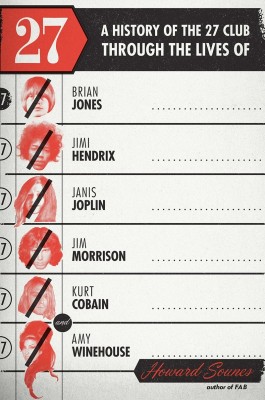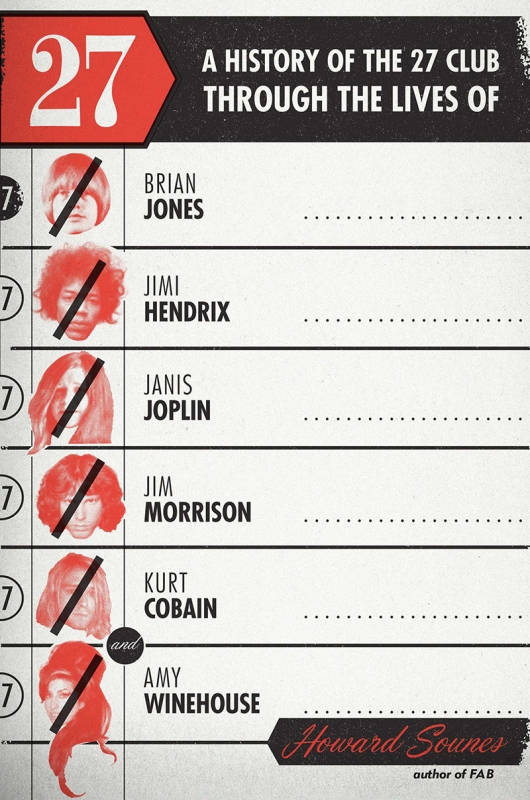Book Reviews
Book Reviews
 27: A History Of The 27 Club Through the Lives of Brian Jones, Jimi Hendrix, Janis Joplin, Jim Morrison, Kurt Cobain, and Amy Winehouse
27: A History Of The 27 Club Through the Lives of Brian Jones, Jimi Hendrix, Janis Joplin, Jim Morrison, Kurt Cobain, and Amy Winehouse
Howard Sounes
Da Capo Press
Street: 11.12.13
Before diving into this book, please be sure you are stocked up on happy pills. It is about famous people on their journey to death, all of whom died at the young age of 27. It is depressing to read about how traumatic their lives were and their difficulties while they were on their path to fame. The frustration from being overworked and dealing with the pressures of being in the public eye seemed to be very damaging to their minds. Drug overdose, foul play, suicide and plane crashes seem to be the main causes of death for the “Big Six” and the remaining 43 members on the “Long List.” Other than gloom, this book had two more challenges. I understand that Amy Winehouse is the most recent artist to join the 27 Club, but I feel that she was spotlighted a bit much. Also, the author should have just made chapters on each of the artists instead of bouncing back through different areas in their lives—it was confusing at times. You had to reread to be sure which artist he was writing about. The flow was just not there. –Mistress Nancy
Apathy for the Devil: A Seventies Memoir
By Nick Kent
Da Capo Press
Street: 08.31.10
Apathy for the Devil is the autobiography of Nick Kent, a legendary British rock journalist who rose to prominence in the burgeoning field of music journalism in 1970s England. His first reviews and interviews appeared in Frendz, and later in main squeeze NME. He received guidance from Lester Bangs of Creem, paired up with legendary photographer Pennie Smith for most of his articles, dated Chrissie Hynde of The Pretenders, and basically interviewed and rubbed shoulders with every well-known rock band or musician of the era: Led Zeppelin, The Rolling Stones, Pink Floyd, David Bowie, Iggy Pop, et al. The book is a great way to brush up on 70s music history – Kent carefully captures and catalogues bands’ beginnings, what the milestone albums of the era were, who influenced who. He was a fly on the wall at rock musicians’ parties and tours and his insights into the personalities, frailties and downfalls of some of the world’s best-known musicians is fascinating and sometimes tragic. After a painful breakup with Chrissie, Nick fell into a depression that led to a harrowing bout of heroine addiction, along with many musicians of the time. His commentary throughout his stories often returns to a common theme: the ruin that drugs and alcohol made of some of the best minds and talent of that era, and how lucky he was to have come out of it at all. –Rebecca Vernon
